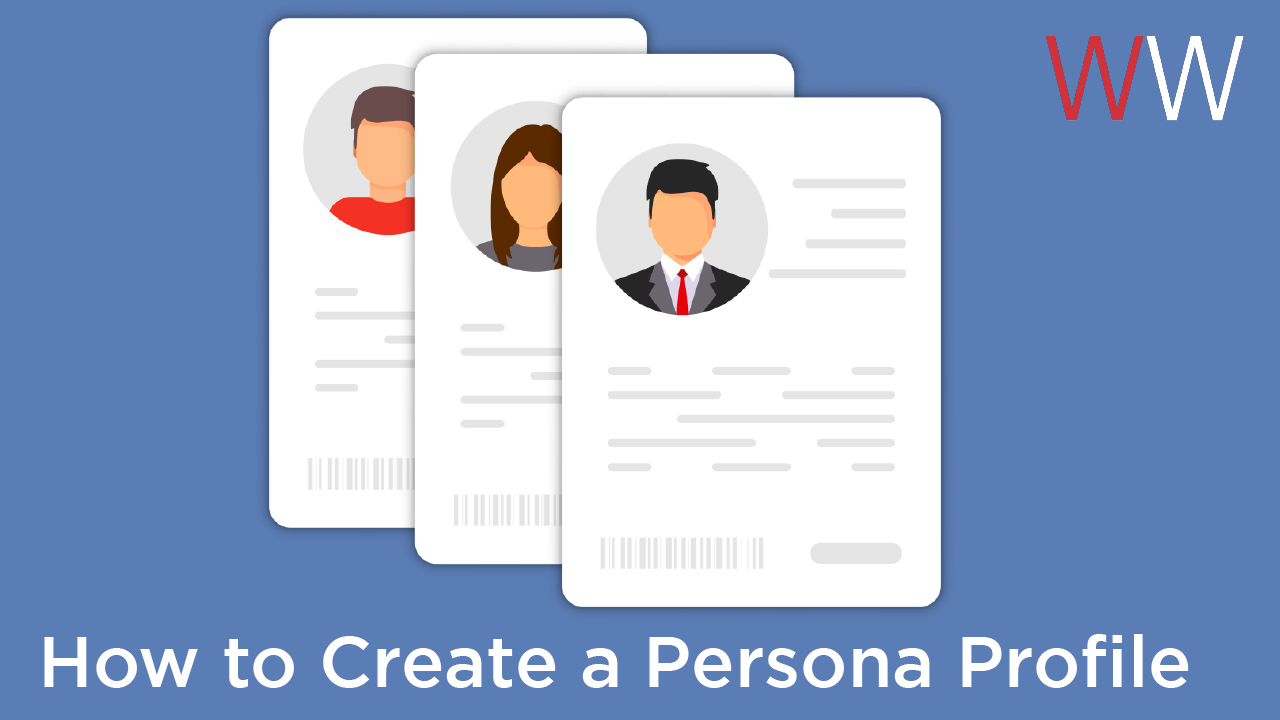By: Glaelis Sierra – Account Director at Williams Whittle
When developing a marketing plan, we need to be as specific as possible. One of the big questions is always – who are we talking to? A quick answer might be… females, aged 25-35, who live in Alexandria, VA. Although that is a valid target audience, it is very broad. In order to target this consumer, you need to know a bit more details about her. That way, you will reach her on the radio station she listens to, YouTube videos she watches, etc. The best way to learn more about your target audience is to develop a persona profile.
What is a persona profile?
A persona is a detailed description of someone who represents a segment of your target audience. It is not necessarily a real customer, but rather a fictional character that embodies the characteristics of a person in your target audience. It can also be called a customer persona, audience persona or marketing persona – in the end, they are all meant to help you target your ideal customer.
In the process, you’ll give this person a name, demographic details, interests and behavioral traits. You’ll understand their goals, pain points and buying/behavior patterns. You can even give them a face by using stock photography of what this persona looks like. Although it will be impossible to know everyone in your target audience individually, you can create a persona to represent each segment of your customer base.
Here are the top three ways a persona profile will help your organization:
- It will help reframe your work from the customer’s perspective – the persona profile will help to keep you focused on addressing customer priorities instead of your own. It will help you to talk in a way that specific persona will understand.
- Target your ads more effectively – knowing who you’re speaking to will help you know which outlets you need to be in.
- Develop messaging and content that appeals to your target audience – knowing your persona will help you develop engaging messages that will resonate better with them and targeted social content.
How to create a persona profile?
Research – The persona profile should be based on real-world data, not your instinct. Here are a few tips on how to gather this information and where to start looking:
- Compile data from your existing customers and social audience including–
- Age
- Gender
- Location
- Language
- Spending power and patterns
- Interests
- Challenges
- Stage of life
- For B2B audiences, consider the size of business and who is the decision-maker
This data can be found in your own customer database, social media analytics and Google Analytics.
- Learn which social channels your audience uses and where they’re spending their time online. In Google Analytics you can see which social networks appear in your referral traffic report.
- Know what the competition is doing – it’s good to do competitive research every 3-6 months and make sure you stay on top of what the competition is doing.
Identify your customer’s pain points – Research and understand what problems or hassles are your potential customers trying to solve, what’s holding them back from success, what barriers do they face in reaching their goals, etc. If you have a customer service department, check in with them to help guide this task. You can get actual customer quotes to better identify those pain points.
Identify your customer’s goals – this is the flipside of pain points. The type of products or services that you offer will help you guide your customer’s goals. What motivates your customers? What are they looking to achieve?
Understand how you can help – after identifying your customer’s goals and pain points, it’s time to create a clear picture of how your products or services can help them. What benefits do your products/services provide customers? Think of your product/services from the buyer’s perspective.
A few more sample questions you should look to answer when developing your persona profile –
- What are their demographic characteristics?
- What is their lifestyle?
- What are their interests?
- What influences their purchase choices?
- What are their past behaviors?
- What do they want from your organization?
- What are their feelings and emotions?
- What type of information do they need and want?
- Where do they look for information?
At WW we developed persona profiles for our client Virginia Hospital Center (VHC) to describe five different audiences that would be targeted through advertising. We defined these five categories for each profile:
- Demographics – including age, location, income, marital status, scholar level, race and preferred method of transportation
- Goals – what is this persona looking for when selecting a hospital
- Key Issues – a key issue for this persona is being undecided when choosing a hospital for care
- Needs – what do they need from a hospital or healthcare provider
- Interests – how do they prefer to be reached, what music they listen to, what social media networks they use, what is their favorite website, what professional skills they have, what is their preferred device to use
- Key Messages – we described the key message that resonates for this consumer based on how they were described
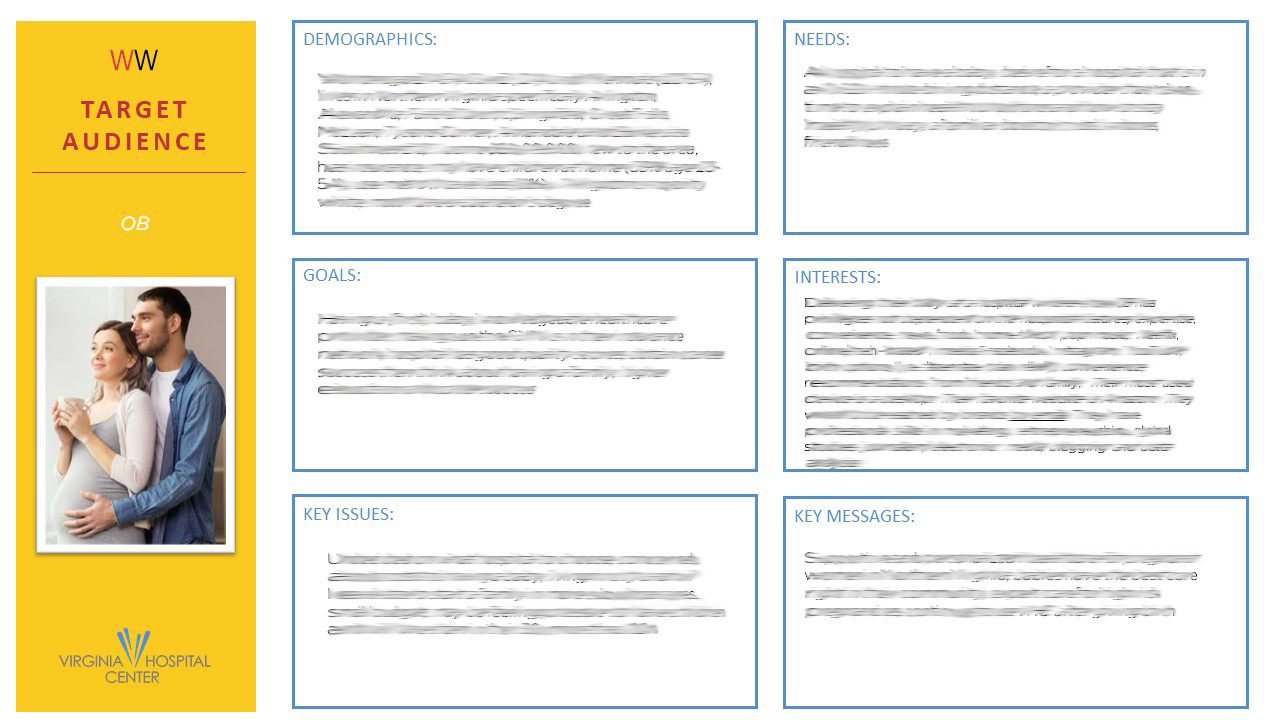
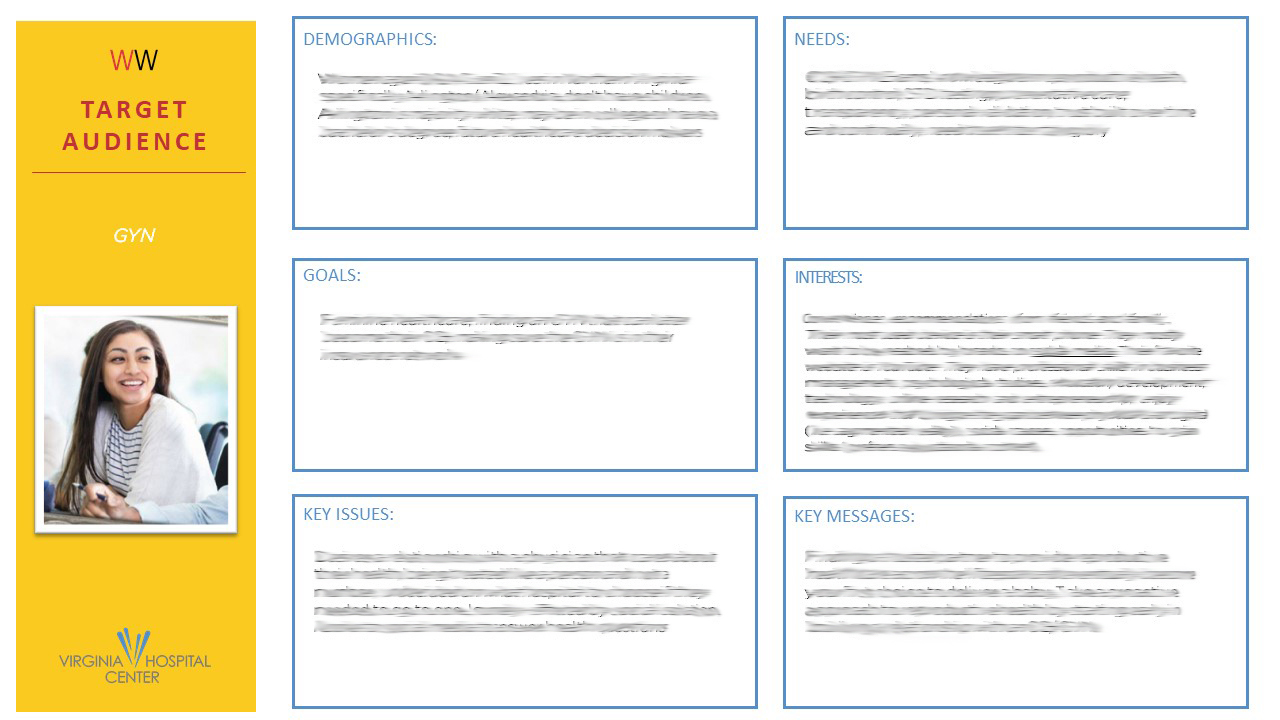
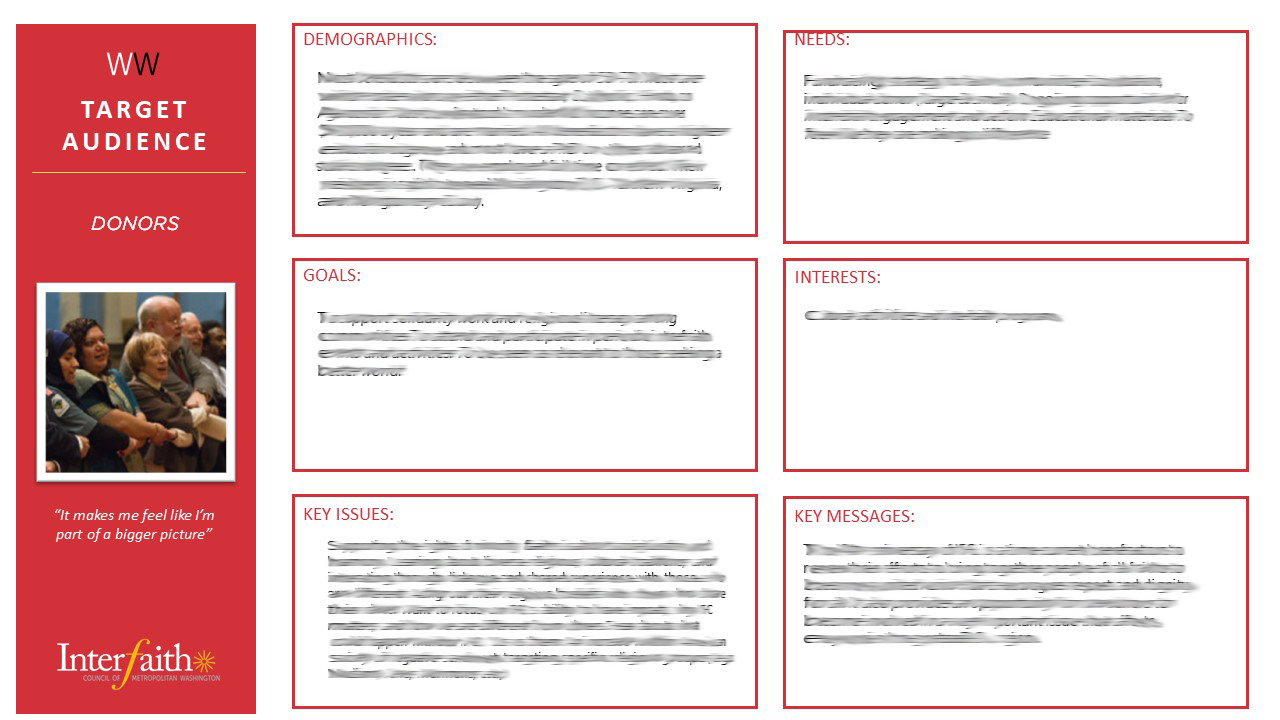
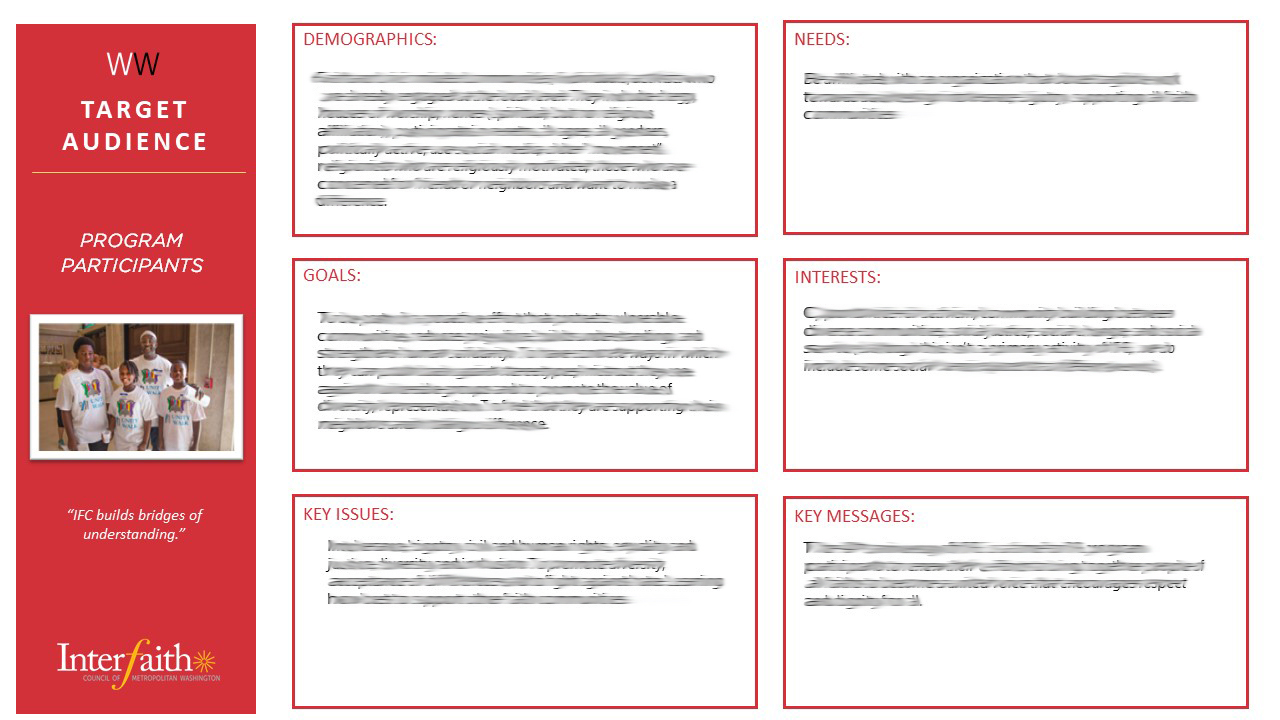
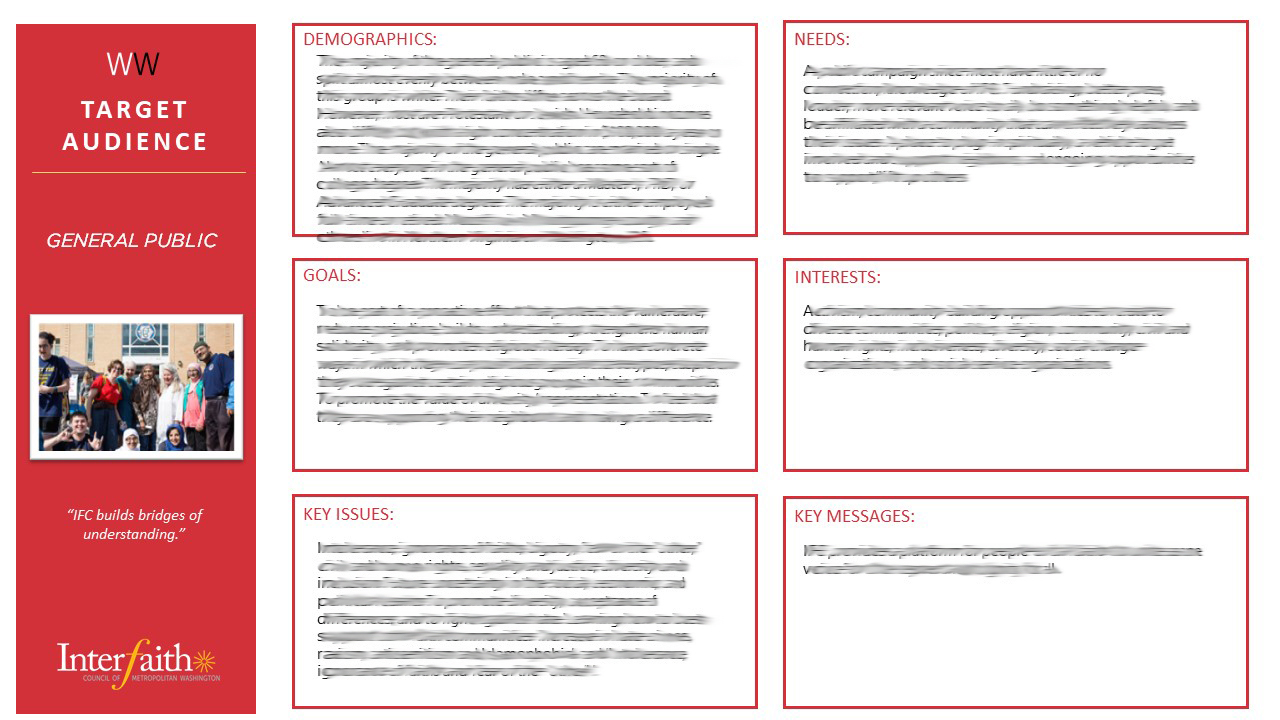
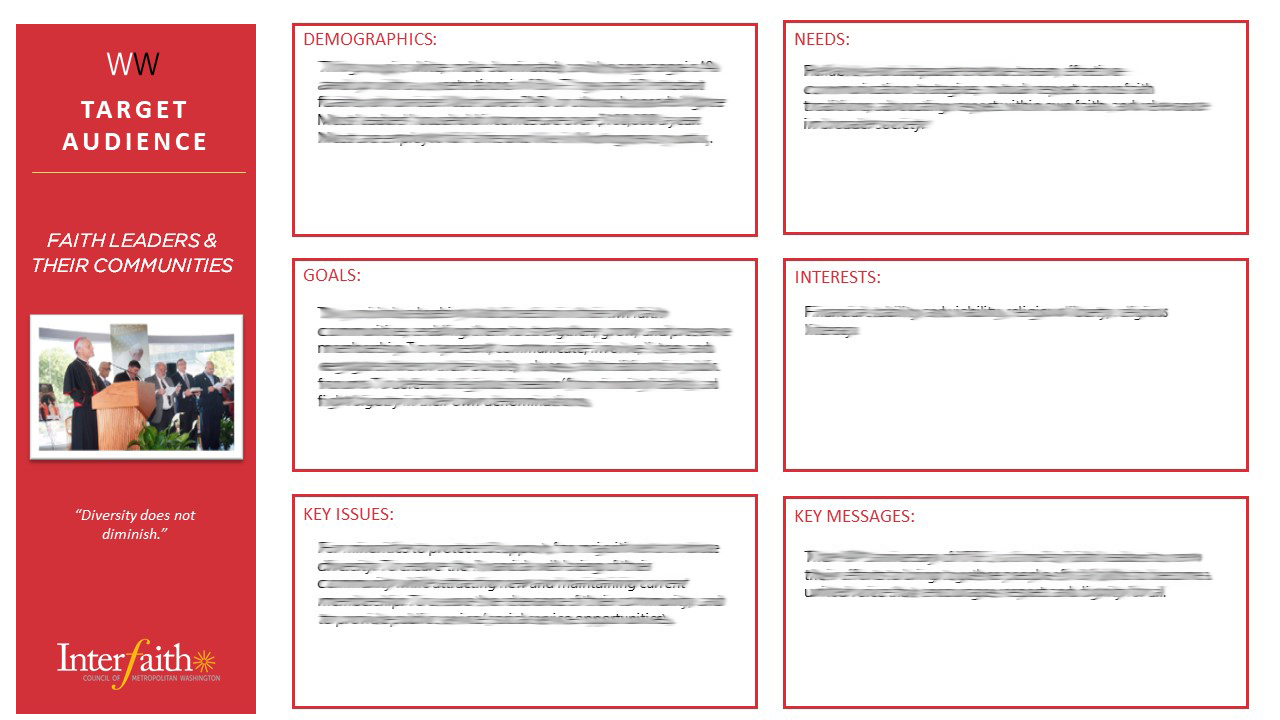
As part of the persona profiles, we also described the corporate partners or corporate decision-makers. These profiles helped us put together the key messaging that would resonate with each of the five personas.
Our team has developed persona profiles for most of our clients. Describing each persona profile will be different every single time for each client. Although the demographics might be similar, the goals, needs, interests and key issues will be different depending on what services your organization provides.
Ultimately, you want to describe a persona so well that you can talk about them as if you know them in real life. These profiles will help you develop more targeted messages that will resonate with each group. Also, these profiles will help drive your media plans and place your ads where your consumers actually are seeing them, which means cost-effective media plans.
Are you ready to get to know your personas? Drop us a line today.
